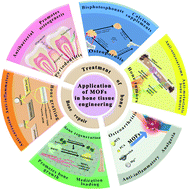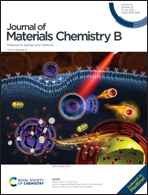Current status and prospects of metal–organic frameworks for bone therapy and bone repair
Abstract
With the development of society, traumatic bone defects caused by accidents, diseases and surgeries have become common, eventually resulting in an increase in bone defects. The treatment of bone defects is characterized by a long period of treatment, high cost and uncontrollable outcomes. Also, it results in complications such as infection and bone discontinuity. Hence, due to this situation, the physical, mental and financial aspects of the patient are severely affected. What's more, such outcomes pose a challenge to orthopaedic surgeons. As a result, bone therapy and bone repair have become a hot topic of interest. In repairing bone defects, materials other than autogenous bone are still unable to provide good biocompatibility, osteogenesis, osteoconductivity and osteoinduction properties at the same time. In addition, the scarcity of autologous bone sources has forced the search for new autologous bone replacement materials. Metal organic frameworks (MOFs) are a new class of developed functional materials that have been widely used in the biomedical field during the recent years due to their porous nature, large specific surface area and diverse structures. With the progress in the investigation into bone treatment and repair, more and more investigators are using MOFs in bone therapy and bone repair. With these viewpoints, in the present perspective, the use of MOFs in bone therapy and bone repair has been summarized, and an insight into the future of MOFs in bone therapy and bone repair has been provided.

- This article is part of the themed collection: 2022 Journal of Materials Chemistry B Most Popular Articles


 Please wait while we load your content...
Please wait while we load your content...